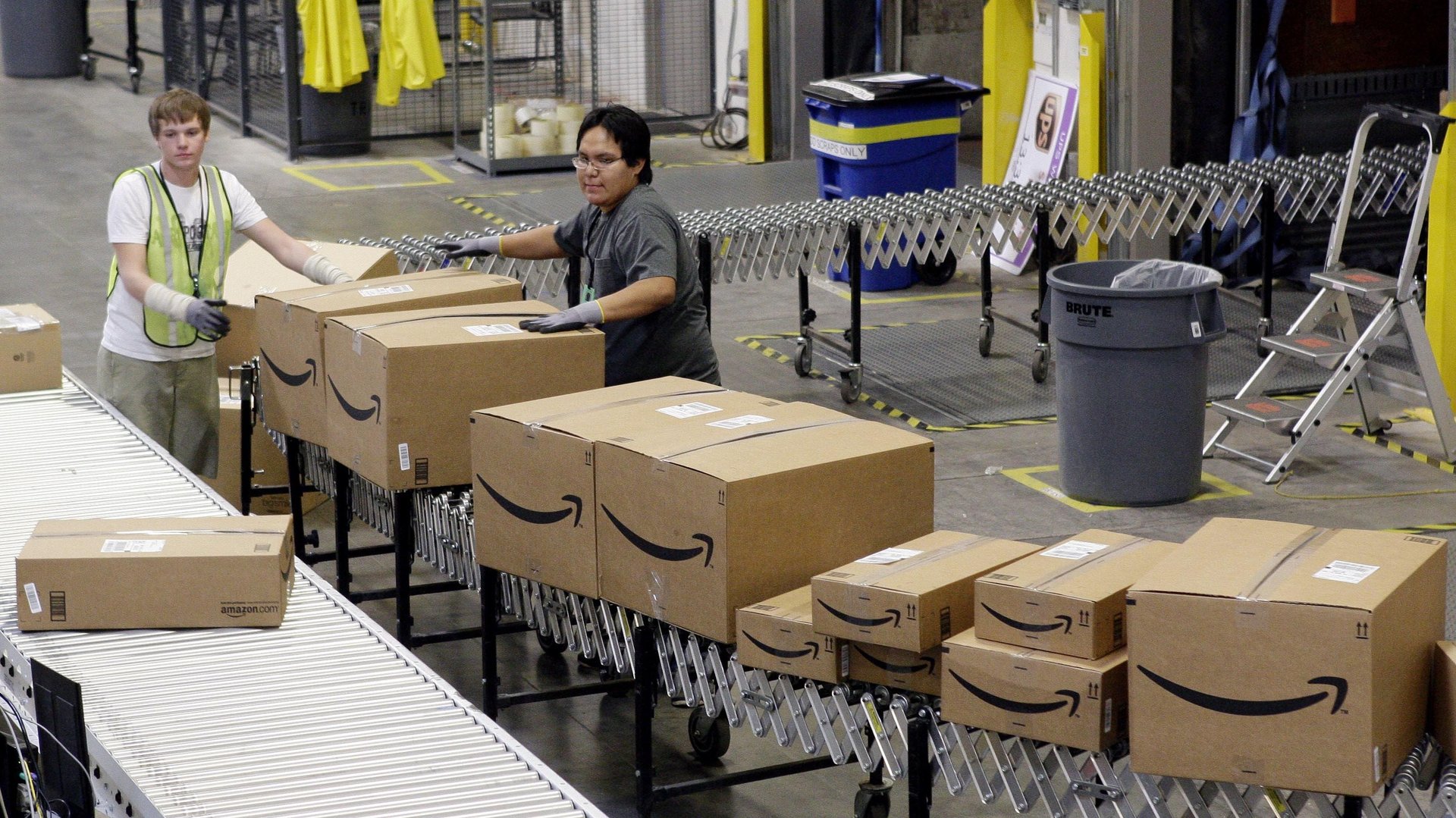Even with 80,000 robots, Amazon is working hard to find human warehouse labor
In some of Amazon’s more than 70 US fulfillment centers, the shelves, carried by robots, travel to human workers rather than the other way around. In all of the company’s warehouses, conveyor belts carry products from one area of the warehouse to another. They are increasingly automated operations.


In some of Amazon’s more than 70 US fulfillment centers, the shelves, carried by robots, travel to human workers rather than the other way around. In all of the company’s warehouses, conveyor belts carry products from one area of the warehouse to another. They are increasingly automated operations.
But the robots haven’t eliminated a need for human workers. On the contrary, industry leaders say there’s competition for human labor. Amazon will hold job fairs at dozens of locations this month, where it hopes to recruit 50,000 workers, most for full-time work inside its warehouses. “It’s clear people have choices,”John Olsen, vice president of Amazon’s world-wide operations human resources told The Wall Street Journal. “That is obvious.”
Amazon now has about 80,000 robots at work in 25 of its fulfillment centers worldwide. But the rate at which Amazon hires humans has not slowed. About 90,000 full-time employees work in Amazon fulfillment centers, and the company plans to hire around 40,000 additional full-time workers this year. Starting pay varies depending upon location, but according to the WSJ, a full-time warehouse job in Baltimore starts at $13 to $14 per hour, while a similar job near Tampa starts at $11 per hour.
Warehouse work will likely become more automated over the next several years. Breakthroughs have been made toward technology that can effectively pick products off of shelves, a task that humans currently handle, and every year, Amazon hosts a “picking challenge” that helps encourage such development.
The increasingly automated warehouse won’t necessarily mean the end of the warehouse employee, argue some industry executives. “With e-commerce, picking, packing, and shipping has to be absorbed by retailers,” says Bruce Welty, the founder of a fulfillment company that ships more than $1 billion of e-commerce orders each year. “There are hundreds of millions of jobs to be created. It’s sort of mind-boggling how many jobs we will have to fill.”
Update: The headline of this story has been updated to reflect the most recently disclosed number of robots that Amazon uses in its fulfillment centers.